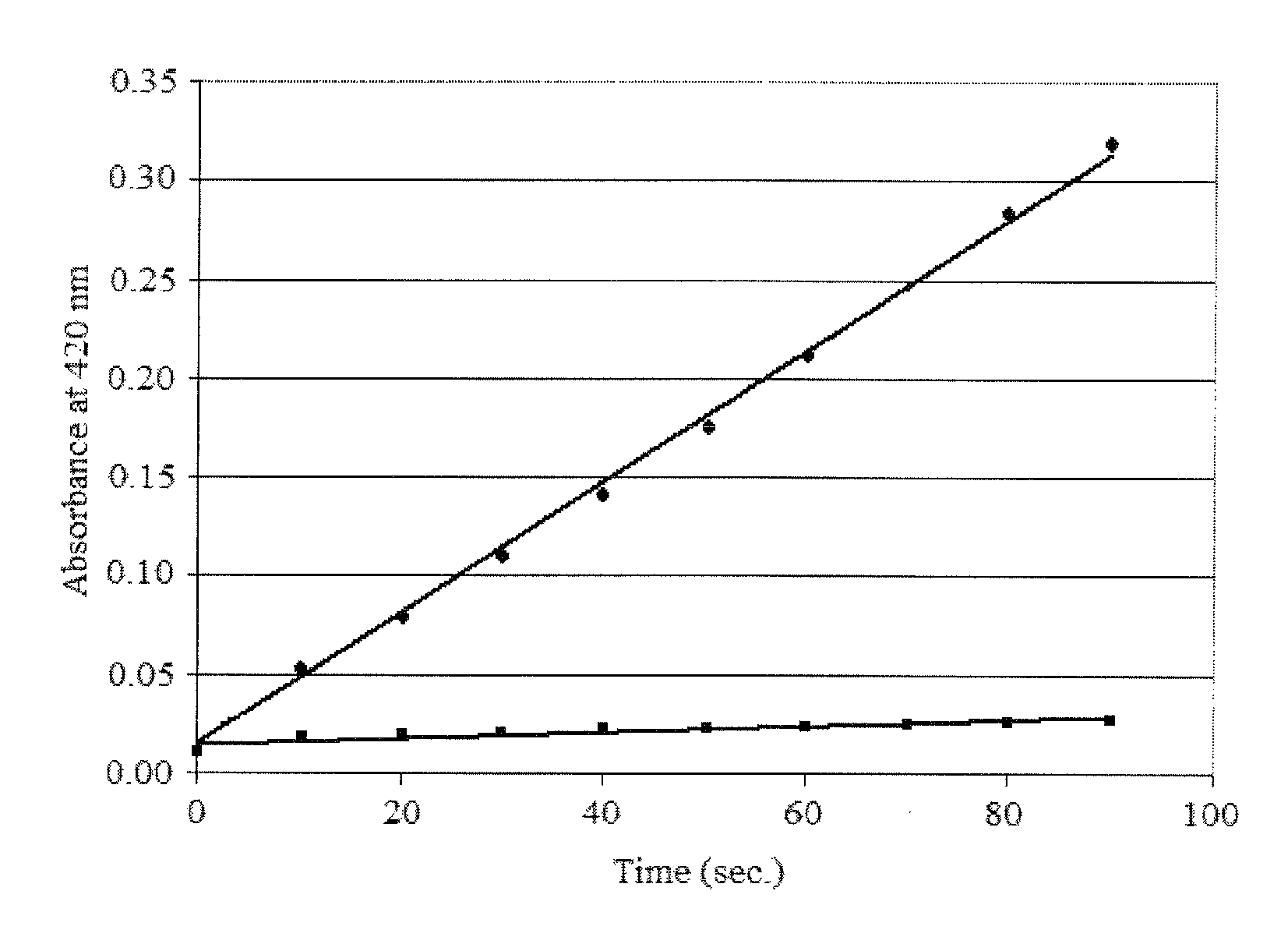Method of inhibition of enzymatic browning in food using hypotaurine and equivalents
a technology of enzymatic browning and hypotaurine, which is applied in the direction of food preparation, organic chemistry, food ingredients, etc., can solve the problems of enzymatic browning being devastating to the distribution of many exotic fruits and vegetables, affecting color, and affecting flavor and nutritional value, so as to inhibit the browning of beverages.
- Summary
- Abstract
- Description
- Claims
- Application Information
AI Technical Summary
Benefits of technology
Problems solved by technology
Method used
Image
Examples
Embodiment Construction
[0014]The present invention is directed to the use of hypotaurine (2-aminoethane sulfinate), or its equivalent, as an inhibitor of enzymatic browning in foods. In one embodiment of the invention hypotaurine is added to vegetable or fruit surfaces exposed by cutting, grinding, slicing, grating, pulping or other processing to inhibit the rate of browning at the surface exposed by the processing. In one embodiment of the invention, hypotaurine can be delivered to a food from aqueous solution. Hypotaurine has a water solubility of about 100 mg / mL. In another embodiment of the invention, hypotaurine can be added as a solid to a liquid food, such as a vegetable or fruit juice, wine or other beverage. In another embodiment of the invention, hypotaurine can be added to shrimp or other seafood to inhibit browning.
[0015]Hypotaurine is a natural compound formed by catabolism of cysteine where the mammalian enzyme cysteine dioxygenase CDO converts cysteine to cysteine sulfinic acid followed by ...
PUM
| Property | Measurement | Unit |
|---|---|---|
| concentration | aaaaa | aaaaa |
| pressure resistant | aaaaa | aaaaa |
| weight | aaaaa | aaaaa |
Abstract
Description
Claims
Application Information
 Login to View More
Login to View More - R&D
- Intellectual Property
- Life Sciences
- Materials
- Tech Scout
- Unparalleled Data Quality
- Higher Quality Content
- 60% Fewer Hallucinations
Browse by: Latest US Patents, China's latest patents, Technical Efficacy Thesaurus, Application Domain, Technology Topic, Popular Technical Reports.
© 2025 PatSnap. All rights reserved.Legal|Privacy policy|Modern Slavery Act Transparency Statement|Sitemap|About US| Contact US: help@patsnap.com


